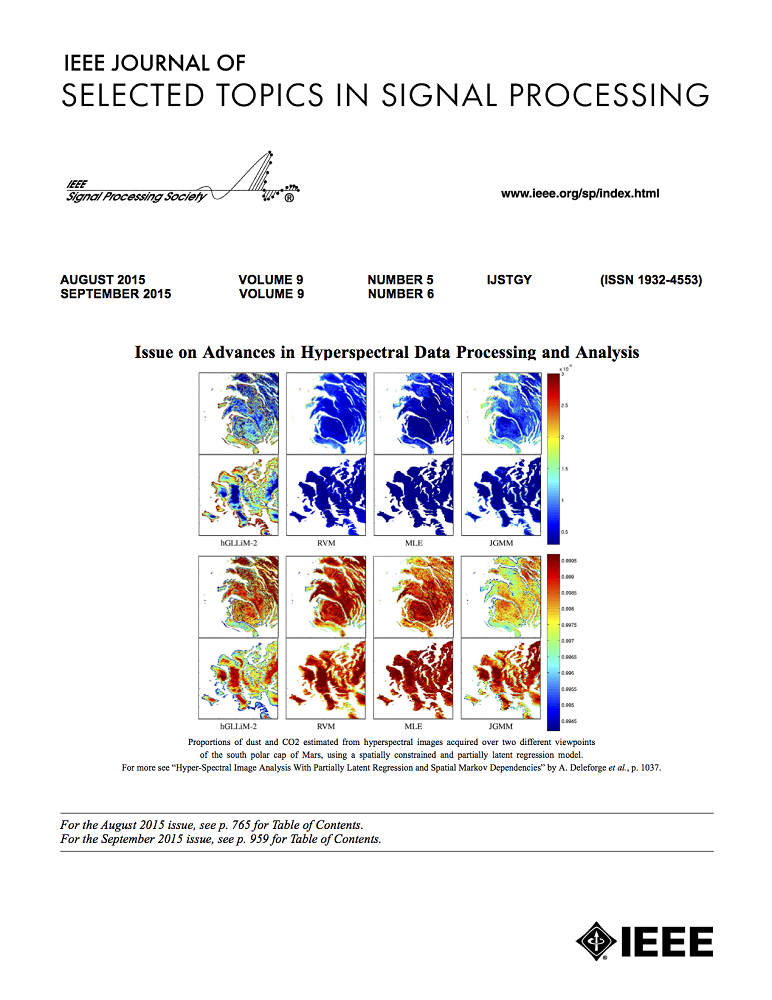基于层次表示模型的在线Neyman-Pearson分类
IF 8.7
1区 工程技术
Q1 ENGINEERING, ELECTRICAL & ELECTRONIC
IEEE Journal of Selected Topics in Signal Processing
Pub Date : 2025-02-20
DOI:10.1109/JSTSP.2025.3544024
引用次数: 0
摘要
我们考虑了统计异常检测问题的虚警率(或误报率,FPR)可控性、非线性建模和实时处理的计算效率。决策理论解决方案可以表述为Neyman-Pearson (NP)假设检验(二元分类:异常/名义)。在这个框架中,我们提出了一个基于二叉划分树的集成NP分类器(Tree OLNP)。Tree OLNP生成样本空间分区的集合。每个分区对应一个在线分段线性(因此是非线性)专家分类器,作为在线线性NP分类器的联合(olnp的联合)。在保持对FPR的精确控制的同时,Tree OLNP将其整体预测作为性能驱动和时间变化的专家加权组合。这提供了一个动态的非线性建模能力,简单(更强大)的专家在数据流的早期(后期)获得更大的权重,从而管理偏差-方差权衡并减轻过拟合/欠拟合问题。我们在数学上证明,对于任何流,Tree OLNP在NP性能方面的渐近表现至少与最好的专家一样好,并且遗憾以O(1/\sqrt{t})$ ($t:$数据大小)的顺序递减。我们的算法计算效率很高,因为它是在线的,它的复杂性与数据大小和树深度呈线性关系,与专家数量呈两对数关系。我们的实验表明,树OLNP强烈优于最先进的替代技术。本文章由计算机程序翻译,如有差异,请以英文原文为准。
Online Neyman-Pearson Classification With Hierarchically Represented Models
We consider the statistical anomaly detection problem with regard to false alarm rate (or false positive rate, FPR) controllability, nonlinear modeling and computational efficiency for real-time processing. A decision theoretical solution can be formulated as Neyman-Pearson (NP) hypothesis testing (binary classification: anomaly/nominal). In this framework, we propose an ensemble NP classifier (Tree OLNP) that is based on a binary partitioning tree. Tree OLNP generates an ensemble of sample space partitions. Each partition corresponds to an online piecewise linear (hence nonlinear) expert classifier as a union of online linear NP classifiers (union of OLNPs). While maintaining a precise control over the FPR, Tree OLNP generates its overall prediction as a performance driven and time varying weighted combination of the experts. This provides a dynamical nonlinear modeling power in the sense that simpler (more powerful) experts receive larger weights early (late) in the data stream, which manages the bias-variance trade-off and mitigates overfitting/underfitting issues. We mathematically prove that, for any stream, Tree OLNP asymptotically performs at least as well as of the best expert in terms of the NP performance with a regret diminishing in the order $O(1/\sqrt{t})$ $t:$
求助全文
通过发布文献求助,成功后即可免费获取论文全文。
去求助
来源期刊

IEEE Journal of Selected Topics in Signal Processing
工程技术-工程:电子与电气
CiteScore
19.00
自引率
1.30%
发文量
135
审稿时长
3 months
期刊介绍:
The IEEE Journal of Selected Topics in Signal Processing (JSTSP) focuses on the Field of Interest of the IEEE Signal Processing Society, which encompasses the theory and application of various signal processing techniques. These techniques include filtering, coding, transmitting, estimating, detecting, analyzing, recognizing, synthesizing, recording, and reproducing signals using digital or analog devices. The term "signal" covers a wide range of data types, including audio, video, speech, image, communication, geophysical, sonar, radar, medical, musical, and others.
The journal format allows for in-depth exploration of signal processing topics, enabling the Society to cover both established and emerging areas. This includes interdisciplinary fields such as biomedical engineering and language processing, as well as areas not traditionally associated with engineering.
 求助内容:
求助内容: 应助结果提醒方式:
应助结果提醒方式:


